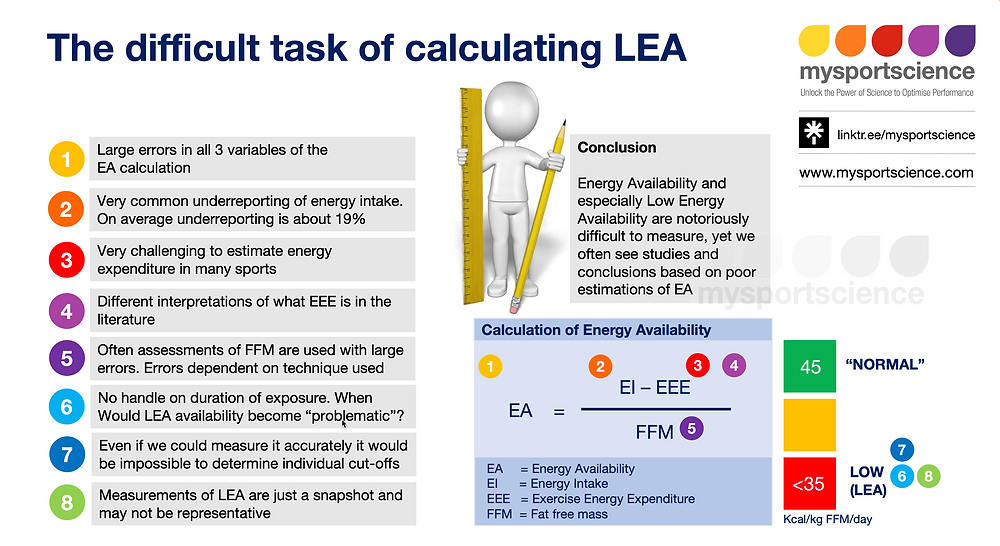Relative Energy Deficiency in Sport (REDs) is a complex and evolving concept, particularly relevant to endurance athletes who engage in prolonged efforts in demanding environments. Central to this condition is the concept of low energy availability (LEA), which can lead to a range of physiological and performance-related symptoms. Understanding the subtleties of energy availability and its impact on performance is crucial, as athletes often face unique challenges in managing their energy needs, nutrition timing, hydration, and recovery strategies.
When assessing energy availability, the conventional threshold has often been pegged at 30 kcal/kg of fat-free mass per day. This measure was initially derived from laboratory studies, predominantly involving sedentary women. However, the reality for endurance athletes living in dynamic environments is much more nuanced. The simplistic application of this threshold in the field fails to capture individual variability and the multifaceted nature of energy demands under race conditions. Athletes are not only contending with the immediate caloric needs of their training but also must address questions related to optimal fueling strategies, gut tolerance issues, and how their energy intake interacts with exercise intensity and duration.
An endurance athlete’s ability to fuel properly before, during, and after exercise can dictate performance outcomes. Proper nutritional timing is crucial; meals and snacks should be strategically placed to optimize energy stores and recovery. For example, consuming carbohydrate-rich meals within the hour before an intense training session can promote glycogen availability, contributing to better endurance. Understanding your own gut tolerance is equally important; not all athletes respond well to the same types of foods or supplements, especially during prolonged efforts. The gastrointestinal system can be sensitive to specific fueling choices under race conditions where hydration status and energy demands fluctuate tremendously.
In terms of fueling strategies, it’s essential for endurance athletes to adopt an individualized approach, assessing their unique metabolic responses to different forms of carbohydrates, electrolytes, and potential supplements. The ongoing challenge lies in not just meeting caloric demands but doing so in a way that minimizes gastrointestinal distress. Some athletes find success with a mix of solid food and liquid energy sources, while others may prefer easily digestible options. Experimenting in training is vital to maximizing performance during races, as knowing one’s tolerance levels can make a significant difference in sustaining effort over extended periods.
Hydration, too, plays a pivotal role in managing energy availability. The body’s energy systems and endurance performance can be heavily impacted by dehydration, influencing not only the physical exertion levels but also hormonal responses that regulate metabolism. Athletes must be vigilant about hydration strategies, which should be adjusted based on environmental conditions, duration of exercise, and personal sweat rates. Periodic testing during training to determine individual fluid needs can help athletes tailor their hydration approaches, balancing fluid and electrolyte losses to ensure that performance is not compromised.
The metabolic efficiency of an athlete, or how effectively they utilize available energy, can also influence how much they need to eat during prolonged efforts. Endurance athletes often benefit from training strategies that enhance fat oxidation, thereby sparing glycogen stores for later in the event. Fine-tuning one’s metabolism can involve dietary adjustments, including increasing the proportion of fats consumed during training phases, to improve reliance on fat sources during prolonged races. These adaptations can lead to more sustainable energy levels, reducing the risk of hitting the wall when glycogen stores are depleted.
Recovery optimization is equally essential, as the post-exercise period offers an opportunity to replenish energy stores and repair muscle damage. Implementing a structured recovery strategy, one that incorporates carbohydrates and protein immediately after exercise, can significantly improve recovery rates. Endurance athletes should also explore variations in their post-training nutrition strategies based on their training volume and intensity. For example, higher intensity sessions may require a greater focus on protein synthesis to aid in muscle repair, while longer, lower intensity efforts may primarily necessitate carbohydrate replenishment.
The factors contributing to energy availability and defining what constitutes low energy availability continue to be areas of active research and debate. One of the critical conclusions from recent studies suggests that current diagnostic criteria may not sufficiently delineate between energy availability and other potential issues affecting athletes. Thus, even when energy availability can be calculated, establishing whether it truly underlies any negative symptoms remains a challenge.
In light of this complexity, the application of these principles becomes straightforward yet essential: consistency and adaptability are key. Endurance athletes should continuously be mindful of how their fueling, hydration, and recovery practices can be modified based on personal experience in training. Monitoring and adjusting based on what uniquely supports their performance will allow for gradual refinement of their race strategies over time.
As a takeaway, athletes should consider implementing a weekly review of their fueling and hydration strategies to identify patterns that correlate with performance impacts. Understanding how energy availability might fluctuate based on different training loads or environmental conditions can guide adjustments, ensuring they always compete at their best, with energy levels aligned to their demanding efforts.
